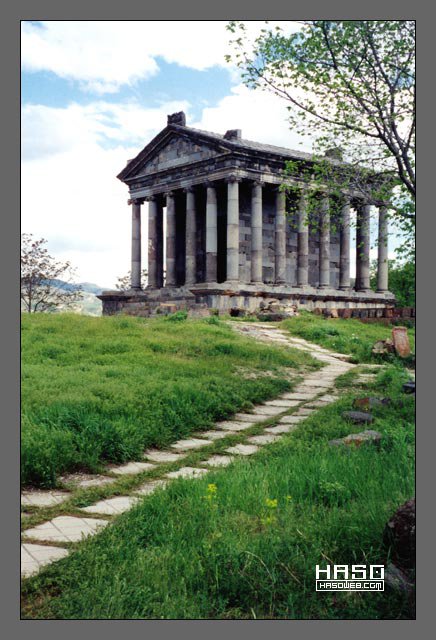


We had a great day today, not only was it over 90 years ago that Armenia declared itself independant of it's Ottoman rulers of 600 years but our school had a flag raising ceremony. It was a project we had worked on for 1 year and are very proud of it, we have a monument with 3 flag poles - 1 for the USA flag, 1 for the California flag and the other for the flag of the Republic of Armenia.
"A Red stripe born from the blood,
A piece of Blue carved from the sky,
Orange shine of ripe stacks in the fields
and over six centuries of darkness
a Tricolor flag..."
Antranig Tzarougian
http://en.wikipedia.org/wiki/History_of_Armenia
http://www.jdemirdjian.com/Armenians/independence.htm
May 28, 1918
Armenians, Rejoice and celebrate
For whatever is your opinion,
You were not there
nor did you live that moment
Independent Armenia was born by the blood of his children, it was not given to us, we earned it
Independence
After the Bolsheviks came to power in Russia, in a period of month and a half, half a million Russian soldiers leave their position and retreat disorderly, leaving the battle front to a small Armenian military group. Encouraged by this, the Turkish army starts concentrating its forces on the Western borders of Armenia. The leaders of Dashnag party, recognizing the problem under the slogan of "The fatherland is in danger" started creating an Armenian army.
The Armenian-Turkish war starts in January of 1918.
Events leading to May 28, 1918
Non stop lines of refugees, from Alexantrapol to Tbilisi, Northern Caucasus and Russia. Also on the roads leading from Ikdir to Etchmiadzine, Yerevan, Ashdarag and Nor Bayazed.
Turkish armies on the fields of Shirag, the valleys of Lori, at the base of Mount Arakatz and on the shores of the river Arax, all directed towards Yerevan.
Internal enemies, Tatars and Kurds, like wolfs packs, interrupting the flow of the soldiers to the front.
External enemies, politicians sitting in Tbilisi, Bakou, Batoum, Moscow and Constantinople. All trying to dismember and tear apart the surviving pieces of Armenia.
Tired, defeated and hopeless Armenian troops retreating for months now.
Total carnage and devastation prevailed everywhere.
All the roads are closed, completely cut off from the world, left to its own fate, a helpless Armenia, without a government or help. Surviving Armenians on their last breath.
This is the Armenian May in 1918 and just like the murderous April of 1915. Only a miracle can save Armenia and its people.
The Miracle
At that critical hour, alarms start blasting from Araradian fields. "Everything and Everyone to the Battle front" - the announcement of the governing council of city of Yerevan, chaired by Aram Manoogian, starts spreading among the people as a challenge. "Everything" changes, retreat transforms into attack, defeat becomes victory, and the miracle happens.
The Battlefront
The Turkish army starts attacking, hoping to finish the Armenian issue once and for all with one last stroke. By May 23rd they take Hamamlou, Gharakilise, Pash Abaran, Sartarabad and Sourmalou on the banks of the river Arax.
The Armenian response
On may 21, ignoring the retreat, colonel Daniel Beg Piroumian gets behind the Turkish army in Sartarabad and starts hitting them from the sides. The surprised Turkish army gets disorganized and scared.
This heroic act encourages the Commander of the Araradian front, General Movses Siligian on may 23rd to order the attack on Sartarabad. People and army, rush the enemy.
On the Arakats front, General Tro's army counter attacks and after fierce battles Armenians take back Pash Abaran and start advancing towards the fields of Shirag.
The Armenian soldiers, gathered in Tilichan, go on the offensive on May 26 under the command of General Thomas Nazarbegian on the Gharakilise front, stop the enemy and take control of the war.
On May 28, Armenian forces are victorious everywhere and the Turkish army is in defeated retreat.
Encouraged from these victories, General Siligian orders "towards guns, towards Alexantrapol." Upon this famous challenge, "Everybody" gets ready to take back the lands from the Turks.
The Victories of May end unfinished.
In Tbilisi, The Armenian National Committee unaware of the victories and trying to save what is left signs an armistice with the Turkish representatives and orders General Nazarpegian to cease all military action, stopping the Armenian army on its tracks. Instead of the soldiers marching into Alexantrapol, it is the politicians that go there to sign the ceasefire agreement.
The new Armenia is established on may 30th 1918 when the Armenian national committee in Tbilisi declares Armenia independent. Socialist Republic was the form of Government. Hovannes Kachazouni is assigned as prime minister, who creates the first Armenian government.
The Armenian government and the legislature are transferred from Tbilisi to Yerevan in July 1918. Quoting the Prime Minister "Under Rain, Chaos and catastrophic conditions" the new government starts its work.




